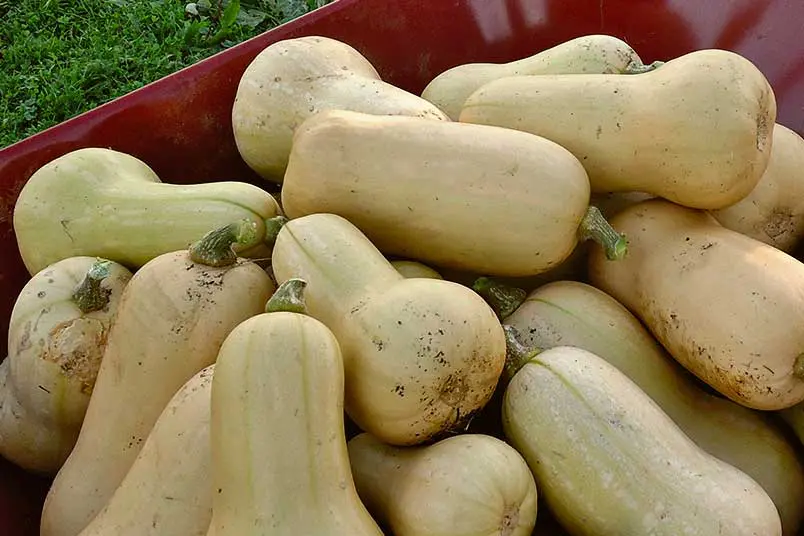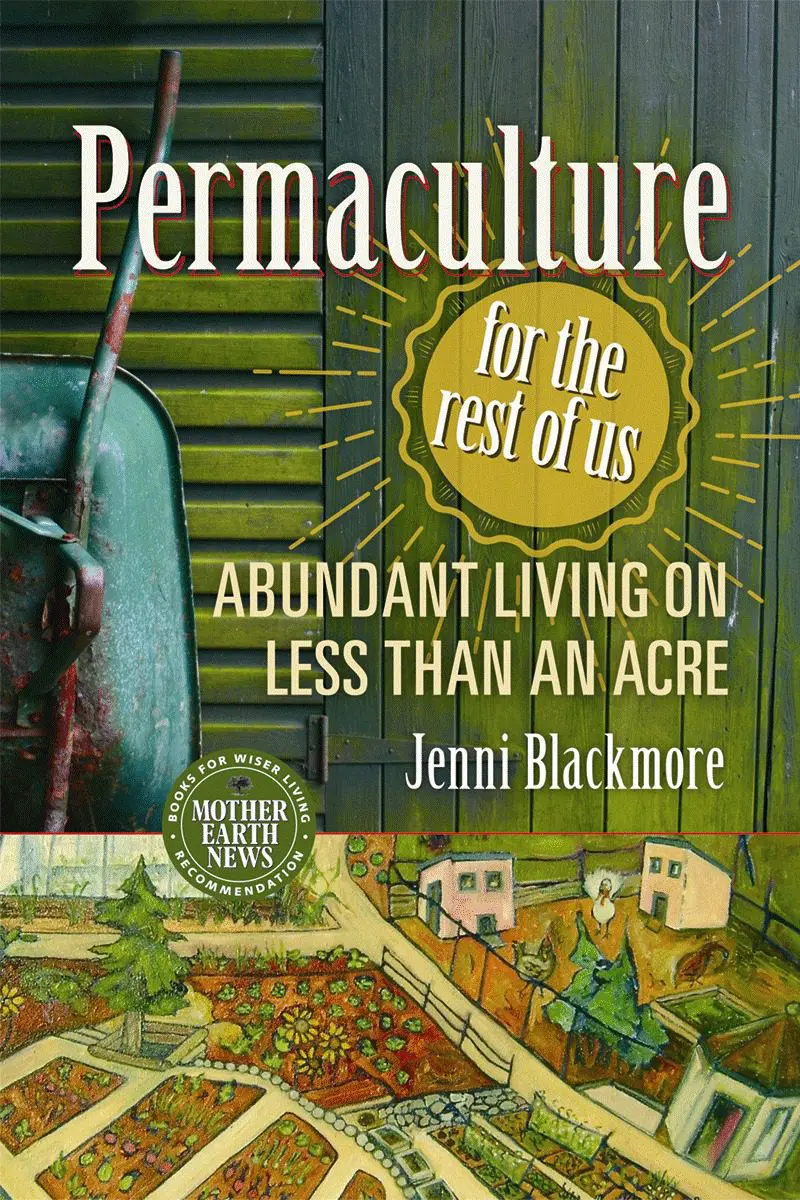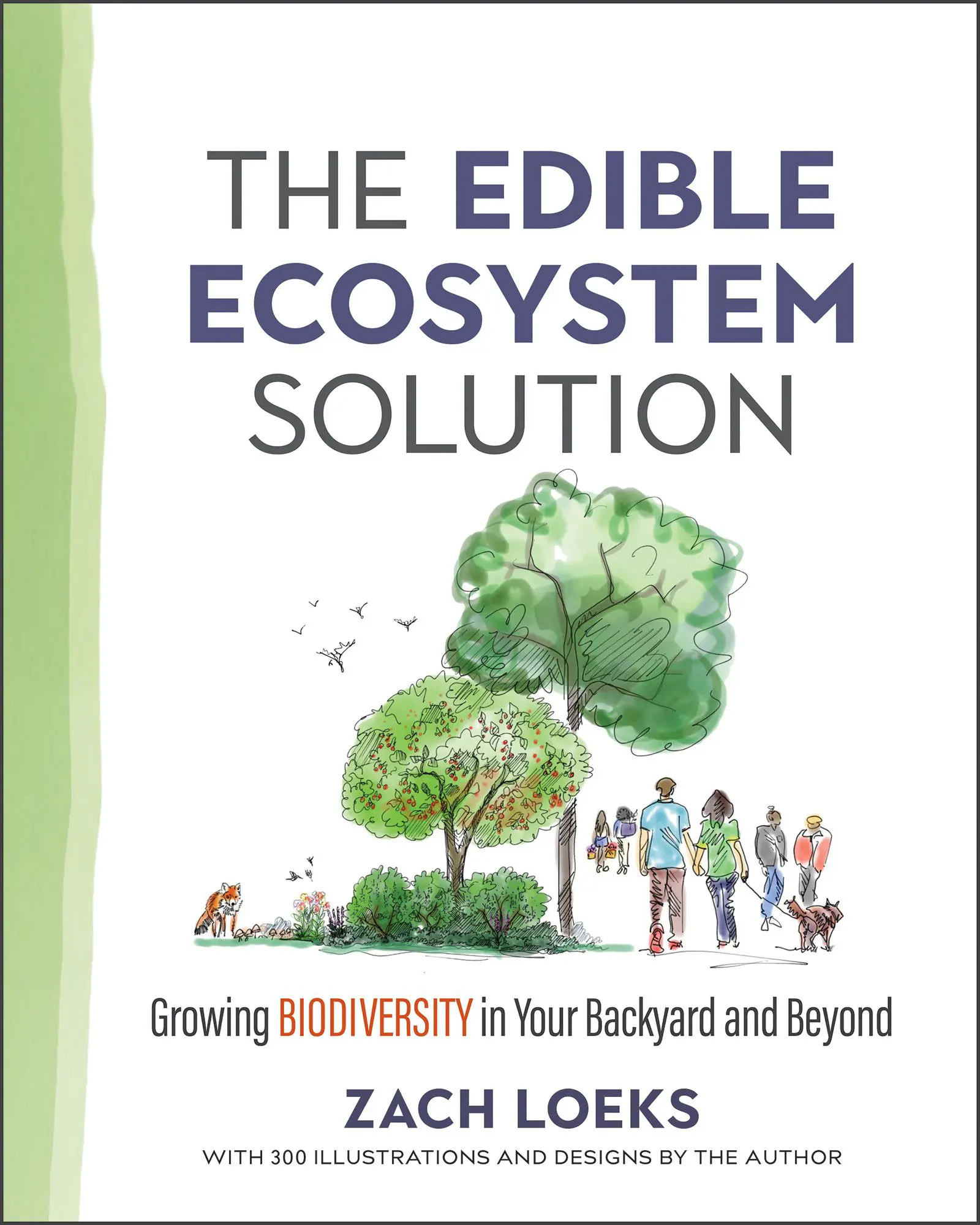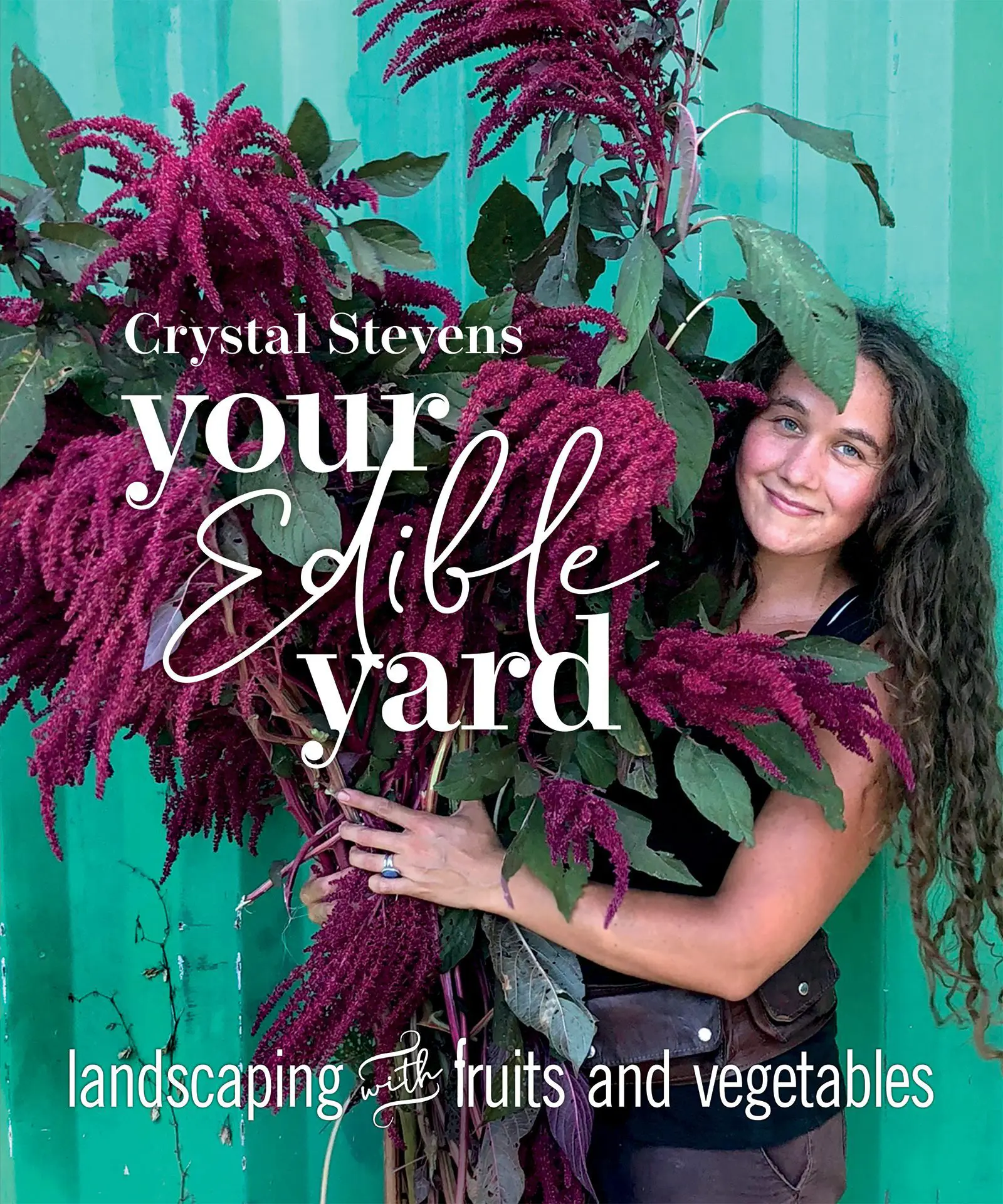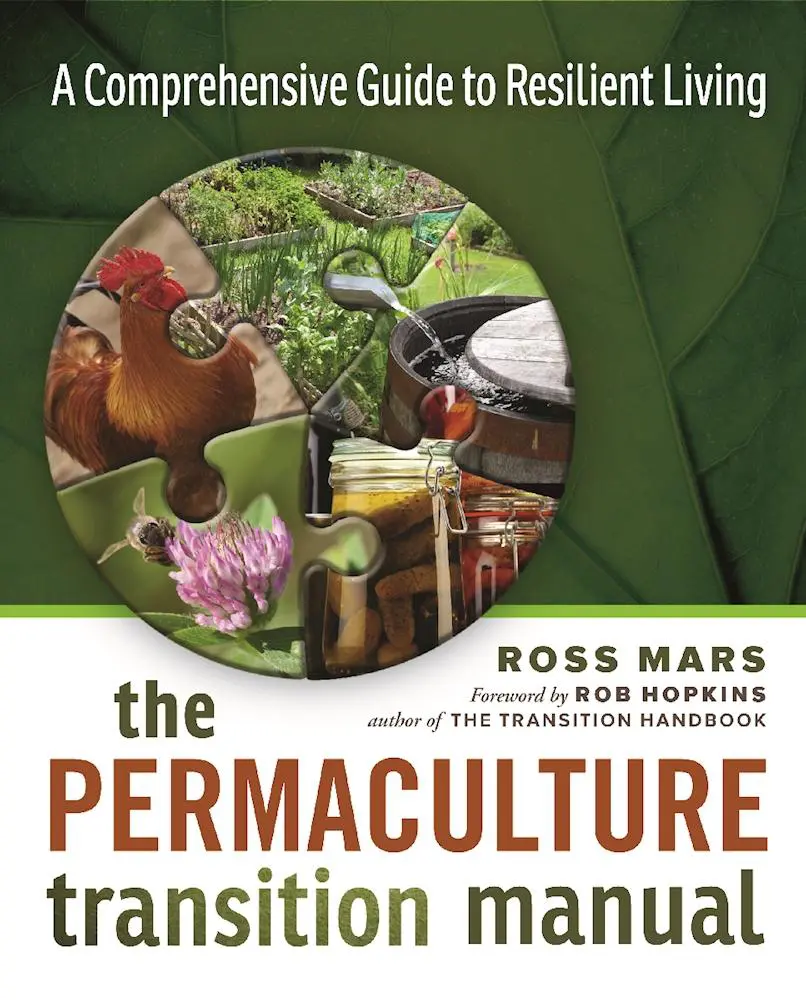
Using permaculture design techniques in your home garden can seem overwhelming – especially if you’re a new gardener, with a small space. With Permaculture for the Rest of Us, author Jenni Blackmore breaks these methods down into small steps anyone can take, and enjoy an abundant garden the first year!
In this excerpt from the book, Jenni gives simple, practical instructions for growing four starter staple crops using simple permaculture ideas in any space, and provides the most important tips for any garden
From Chapter 5: Easy Starter Crops
I’ve chosen to mention the following four vegetables here because they are all relatively easy to grow. Also, each has a preference for when it is planted: Garlic, for instance, likes best to be planted in the late fall. It might have taken all summer to prepare soil and construct a new bed and it’s satisfying to be able to plant right there and then, rather than have the bed remain empty until the next spring. Garlic is the perfect choice.
Chard likes to be planted in early spring. It is very hardy and will grow reasonably well in mediocre soil.
Potatoes are planted mid to late spring and don’t require the kind of perfect soil that develops after several years in a well-tended plot. They also don’t require a lot of soil as they can be heavily mulched with organic material to provide all the cover they need. They’re great for starter plots, especially as the mulch rots down and increases the amount of organic material in the existing soil, thereby increasing the actual amount of soil as the bed is used.
Finally, squash can be planted considerably later, in early summer, in an easily constructed mound, as opposed to a well-worked bed. They’re good for impatient gardeners (and aren’t we all?) and are usually quite prolific, pleasing in both taste and performance.
Garlic
Back to garlic— it’s a very satisfying and purposeful crop to plant. I say purposeful because it almost seems like it does have a purpose as a curative and a preventative, in addition to being a surely most necessary ingredient in so many dishes. In medieval times it was also thought to keep the devil at bay and, worn around the neck, it was believed to protect against the plague. While I won’t argue against any of these uses, I would like to add my theory to the list. I believe garlic, by way of its rather specific needs, demonstrates what a simple thing it is to obey cycles and seriously consider planting times. It also strongly encourages crop rotation and late season planting.
Years ago, when I didn’t have much of a clue about gardening, I tried planting garlic. All I harvested were some brittle stalks with slightly nubby ends. I decided garlic must be very difficult to grow and didn’t try again. I had planted the cloves in June (along with everything else) and harvested in September. If I had waited until the next spring to harvest I might have had a great crop. Garlic has very specific ideas about when it needs to be planted. It likes to be planted in the late fall for harvest the following summer. It’s as simple as that. Ideally the cloves should go into the ground about three weeks before the first frost. Early enough that it can put roots down but not allowing enough time for substantial shoots to emerge above ground.
The fall planted garlic will sprout in early spring and grow slender leaves looking not unlike daffodils at first.
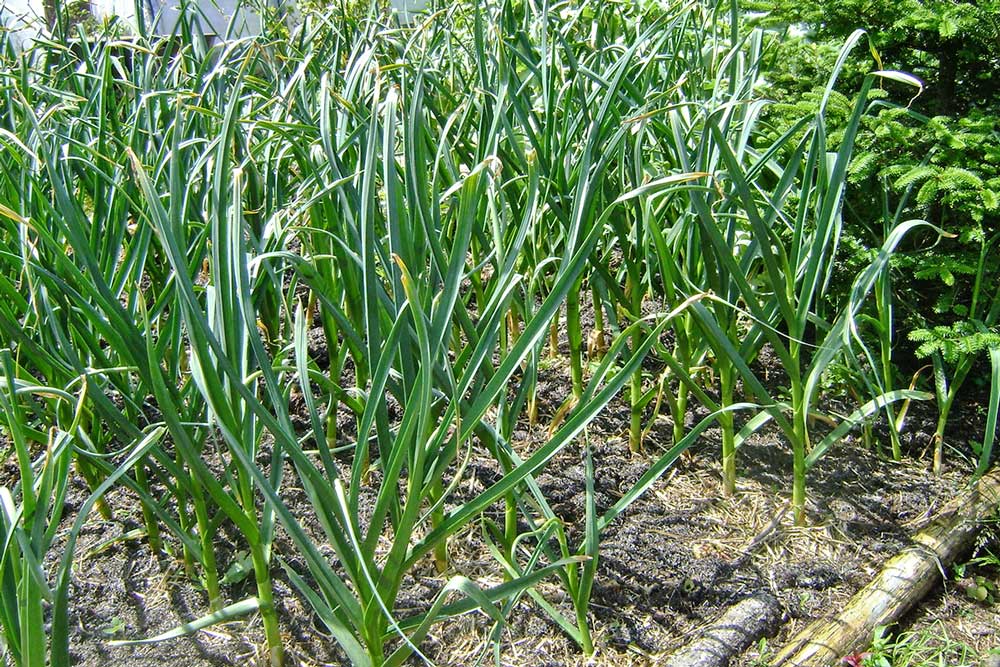
Garlic Scapes
Sometime in early to mid summer they will produce scapes. Scapes are thin but rigid stalks each topped with a pointed green cap which, if left, will open, flower and produce bulbils. Before this flower appears the scape will curl around on itself creating a circle about three inches in diameter. These scapes look very elegant at this stage, a wonderful addition to any flower arrangement. More importantly, they make delicious pesto.
Several weeks after the scapes appear some of the outer leaves of the plant will start to turn brown and wither. This means it’s time to harvest the garlic bulb. If left too long past this stage the outer, papery wrap of the bulb will split as each clove begins to swell prior to sprouting. The cloves don’t store as well in this condition and may taste a little bitter.
There are three or four main types of garlic. Some have larger but fewer cloves than others and the intensity of flavor will also vary. The larger cloves are not necessarily the most pungent, but they are certainly easier to skin. It is always a good idea to plant more than one variety, not only to discover which type you prefer but also to ascertain which type of garlic most likes the soil and climate conditions you have to offer.
Each clove planted will produce a full bulb. Bearing in mind that a braid of homegrown organic garlic makes a pretty phenomenal gift, it is better to plant more than you think you will use. Each bulb will need to be lifted with a digging fork as they will have developed a clump of short but tenacious roots. These roots can be trimmed away but the leaves are left to be tied or braided and the garlic is then hung in a cool dry place, such as the garden shed, to dry. One disastrous winter I left our whole garlic crop hanging in the shed too long and it froze. Not good!
N.B. Although the optimum planting time for garlic is in the late fall, it is possible to plant in the very early spring as soon as the frost has left the ground and still have a relatively good yield by harvesting much later in the year.
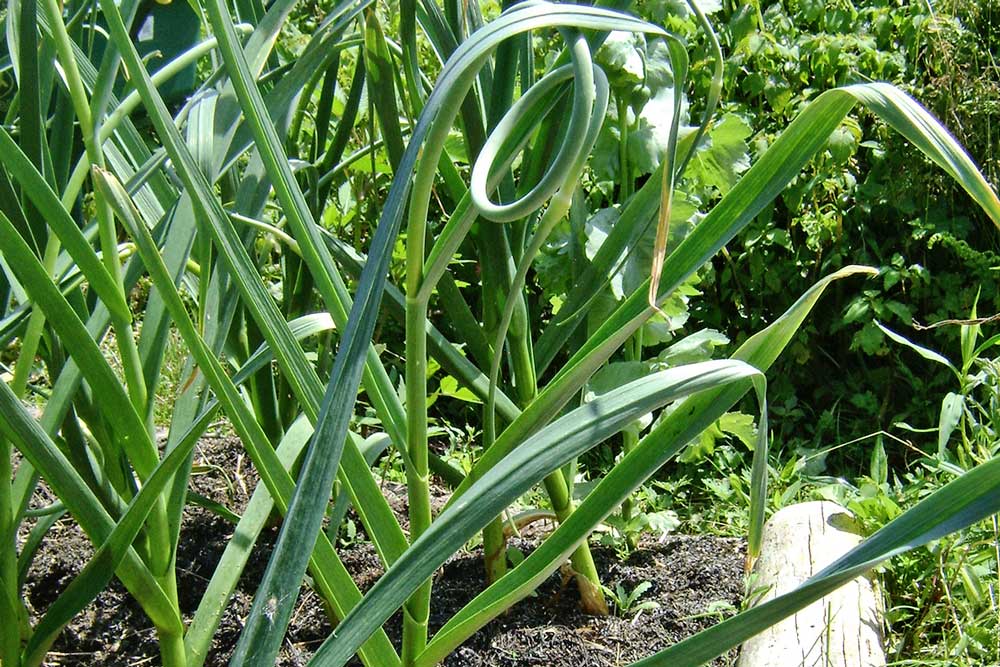
Potatoes
Potatoes are another simple yet highly satisfying crop to plant. Having said that, I should add that when it comes to specifics they are one of the few crops Calum and I disagree on. I believe that potatoes can be grown in a deep bed consisting of nothing but eel grass (seaweed) whereas Calum insists that this is not possible as they require at least a little soil to produce fruit. This creates a dilemma. Certainly, I don’t want to be responsible for any disappointments come harvest time, but having known a couple of old timers who survived on not much more than potatoes grown in eel grass (along with as much salt fish as anyone might want to eat in a lifetime) I like to plant in eel grass. A similar effect can be achieved by laying potatoes on the ground and layering with straw as the shoots emerge.
Why buy seed potatoes when some of last season’s spuds have sprouted in the basement? Seed potatoes are grown specifically to produce many offspring. They are planted late and harvested early so that most of their growth capacity remains untapped. This untapped potential allows them to flourish with vigorous growth when given the opportunity. Last year’s wizened potatoes, by comparison, have already used up much of their growth potential by growing to their full capacity and will not have multitudinous progeny. It is possible to produce one’s own seed potatoes but even this is not the best idea. The most common diseases that affect potatoes, such as scab and center rot, tend to accumulate over time. Using seed from a single source allows initially slight problems to compound with each planting.
Similarly, planting in a designated “potato bed” year after year is just asking for major blight and rot issues. Crop rotation is essential to healthy gardens, and it applies to most, if not all, vegetables. Certainly, it will be mentioned again, but as potatoes are particularly susceptible to accumulative cycles of disease, now is as good a time as any to introduce the concept—not that there’s anything new about crop rotation. I vaguely remember being told it was one of the key points of the Agrarian Revolution in Medieval Europe but somehow, back in grade school history class, that seemed like such a totally irrelevant piece of information. Who could know?
There are many different types of potatoes, with almost as many differing attributes. Broadly speaking they fall into three main categories: early, mid and late season. Some store much better than others; some are dry and, therefore, mash well, while others are more moist and perfect for baking. Some have yellow flesh, some have red skins, some have smooth thin white skins that don’t need to be peeled, while others can be deep purple and look somewhat more unusual. It’s a good idea to plant more than one kind of potato, perhaps an early, a mid and a late variety, taking care to mark which is which. You might think you will remember which is which come harvest time but chances are pretty good that you won’t. It has been my experience that the earlier varieties tend to have the more tender skins while the later ones have thicker skins which protect the potato better during prolonged storage.
Potatoes are tough, salt of the earth types as far as personalities go and very easy to grow, but they do not like the cold. Planting too early will result in ruined seed and harvesting too late, after a frost or two, will result in a slimy mess and much disappointment. Rule of thumb: if you think it could be time to plant potatoes, you might want to wait a week or so. Premature planting in soil that has not had quite enough time to warm up and there is still risk of a late season cold spell, will often result in the need to replant. And that’s no fun. This might sound like a contradiction but a later planting can often result in an earlier harvest. Plants that don’t like cold soil are easily set back and are then slow to recover.
Potatoes are in fact a vine and can be encouraged to grow vertically by adding mulch every week or so as the head of the plant appears on the surface, poking up towards the sky. One way to do this is to plant the seed potatoes in a “box.” Ours is about five feet square and effectively a “coral” as it has no base. The potatoes are placed directly on top of the soil and when they are showing sturdy growth of four to five inches they are covered with more soil, straw or seaweed. This process is repeated until the box is full. It’s best if the box is constructed of stacking board-width squares so that at harvest time the layers can be removed to allow easy access to layer upon layer of potatoes.
This system is another demonstration of the less-for-more permaculture ideal as it uses minimum space for maximum yield. Any suitably sized horizontal container can be used in this way, as can a cylinder of snow or chain link fencing. Some people use stacked car tires which are perfect in shape and volume for a single potato plant but our concern over what the potatoes might be absorbing from this petroleum based product keeps us away from doing this. This reminds me to reiterate the importance of not using pressure-treated wood for anything in the garden. Treated wood might contain arsenic or other chemical compounds which can leach into the ground and be taken up by your food plants. The risk might be minimal but why take it?
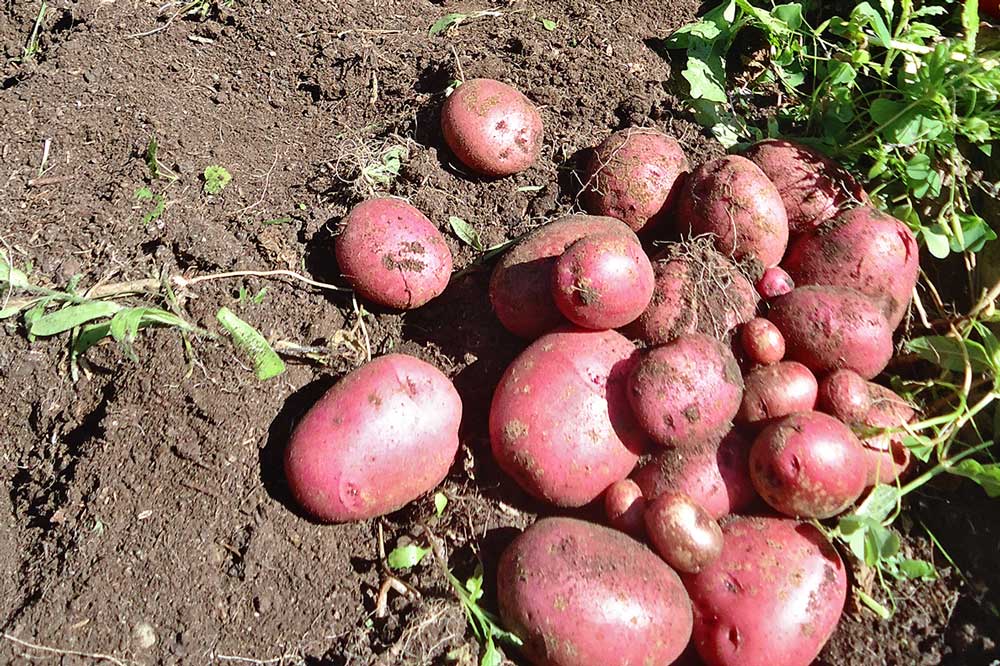
Swiss Chard
Another rugged, easy to grow staple around these parts is Swiss chard. It won’t germinate once temperatures rise above 60°F (15°C) so it needs to be planted in the spring. It will withstand many hard frosts and often manages to overwinter, especially when well mulched. It might not be everyone’s favorite when many other choices abound in the summer garden but cooked up, fresh picked in February, it tastes positively gourmet. I like to simmer it with a clove or two of garlic and dress with a mustard/mayo sauce. It is also a perfect replacement for spinach in Turkish lentil soup and many other recipes that call for spinach.
Traditionally chard came with a thick white stem similar to the rib of Bok Choy. This is still probably the hardiest variety but next in line would be the red stemmed or “strawberry” chard. This is my favorite. There is also a rainbow variety which includes yellow, orange and peppermint striped stems. This is a novelty, very attractive and perhaps more delicate in taste and texture than the heritage strains, but it seems to be more difficult to propagate, more inclined to bolt and is definitely less tolerant to frost. It is a good idea to plant a couple of strains of chard, but not too much of it. It grows vigorously and unless you have several friends and neighbors who love chard, using it all can become challenging.
Fortunately it does freeze well when lightly blanched, so chopped and frozen it’s a viable option in winter soups and dips.
It’s very tempting to overplant just about everything. Come March or April the earth looks so desolate and tongues are beginning to yearn for the taste of crunchy fresh greens. How can less be more? Well, yes it can, especially when all available planting space is filled to capacity with early stuff and you still have several later varieties you want to try. If all the spring planted chard does happen to bolt through the summer, a fall planting is recommended. If it is a particularly warm fall, such as we are often blessed with, it might be difficult to get the seeds to germinate. This is when I start seeds in trays in the basement, which always remains quite cool. In the spring the seeds are planted directly into the ground. They’re better thinned as they start to grow because a healthy plant, which is shaped similar to a large romaine lettuce, can easily produce a dense growth ten to twelve inches in diameter. It is always best to snip off rather than uproot when thinning so that the remaining plants are undisturbed and the “decapitated” roots break down, creating channels which enable air and water to penetrate the soil. An additional advantage to this method of thinning is that the small leaves that have been culled are all ready to go in the salad with no muddy roots to deal with. Cutting beats pulling just about all ways.
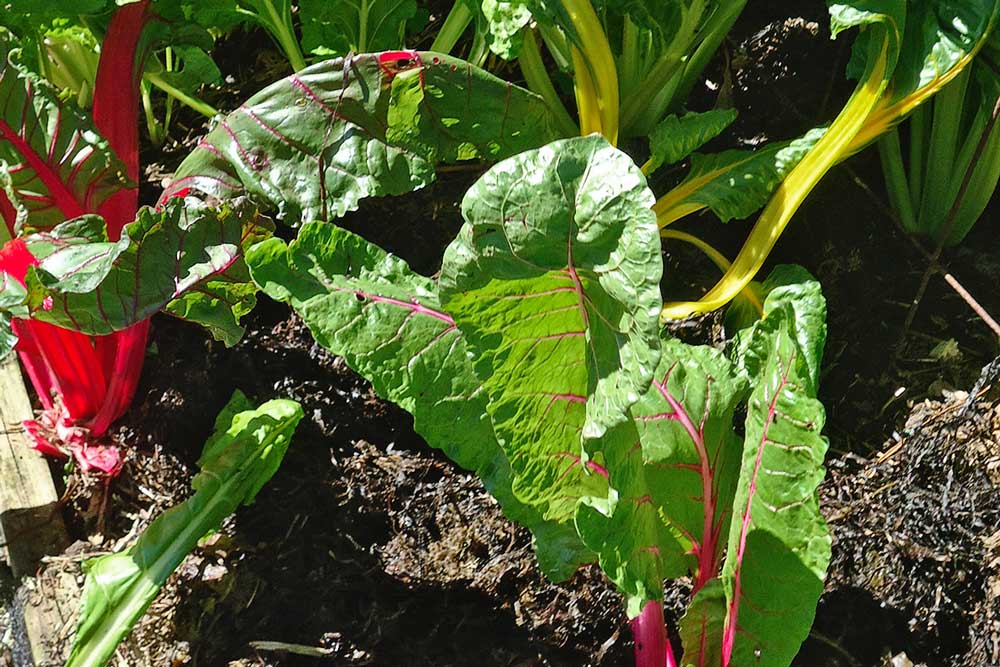
Squash & Pumpkin
The three previously mentioned vegetables all require to be planted fairly early in the growing season. The next two suggestions prefer to be planted later when things have warmed up considerably: squash and pumpkin. Here I’m using the word squash to refer to summer squash, such as zucchini, and pumpkin to refer to those big orange globes, which I think of as winter squash even though they are actually mid-way between the two.
There are many varieties of both winter and summer squash. Generally speaking, winter squash take longer to mature. They have hard skins and store well. Summer squash fruit up more quickly and are better picked when they are young, not yet fully matured. Both have a variety of uses in salads, soups, stir-fries and baked goods.
In a new garden, a suitable growing space can be prepared for either of these species fairly easily. They are heavy feeders which need room and like lots to drink but don’t like to have their feet (roots) kept wet. As the instructions on seed packages usually state, mounds of well-rotted manure work best. Compost mixed with some soil works equally well, if not better. Manure, compost and soil; well that’s the bees’ knees and yes, bees love the big yellow flowers that both species produce prior to fruiting.
It doesn’t take much effort to set up a fertile mound (two to three feet in diameter and eight to ten inches high) on a patch of uncultivated, infertile ground. To keep down surrounding weeds, I simply mulch with newsprint and cardboard covered with straw.
The squash plants, which are vines, will need space because depending what they are feeding on (what is in the mound) they might well travel twenty or thirty feet. They can be trellised and trained to grow upwards, and they do climb trees. Fun!
Unimpeded sunlight and regular watering are the two other necessities. Occasional watering with manure tea, or fish fertilizers, makes a huge difference and in fact growers of humongous prize-winning pumpkins usually have their own secret recipes, which they feed to their pet plants on a daily basis in order to encourage their impressive girth. I believe regular consumption of chocolate cheesecake works in a similar way on some of us.
Zucchini and other summer squash don’t grow on vines like winter squash, even though their requirements for healthy growth are quite similar. They look almost identical to their winter cousins during the first stages of growth but they don’t travel. The plants shape up to look more like wide, low growing bushes than vines: two to three feet high at least and several feet in diameter. Each platter-sized leaf is attached to a stem that reaches directly back down to the base of the plant. These stems appear to be sturdy but are in fact hollow and quite brittle. It’s easy to overlook the young zucchinis as they are well hidden under the canopy of leaves and it is best to pick regularly when they are small. I always manage to end up with several mega squash that I didn’t notice until the first frost wilted the leaves. These do well in soups and stir-fries and are delicious stuffed and roasted.
These are just a few examples of what can be grown easily and with little to no experience. Growing food is not difficult. If it was, I doubt we would have survived as a species. There are some basic rules which become second nature. . .over time. And I do think this is the key: knowing that a perfect garden doesn’t come together overnight; it takes time.
